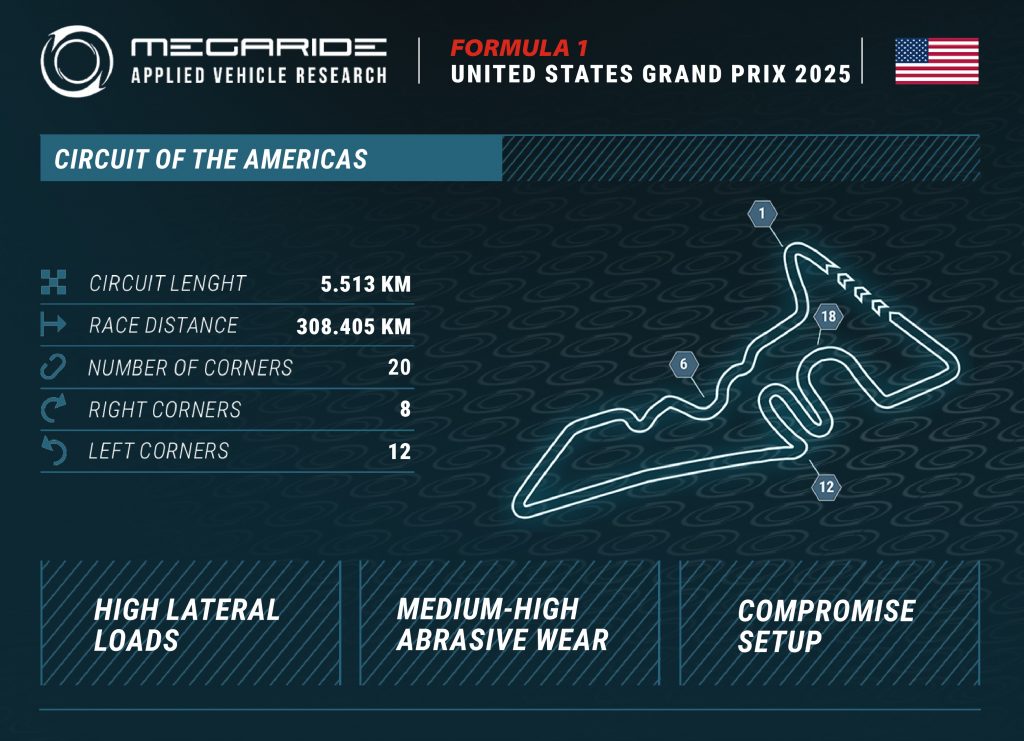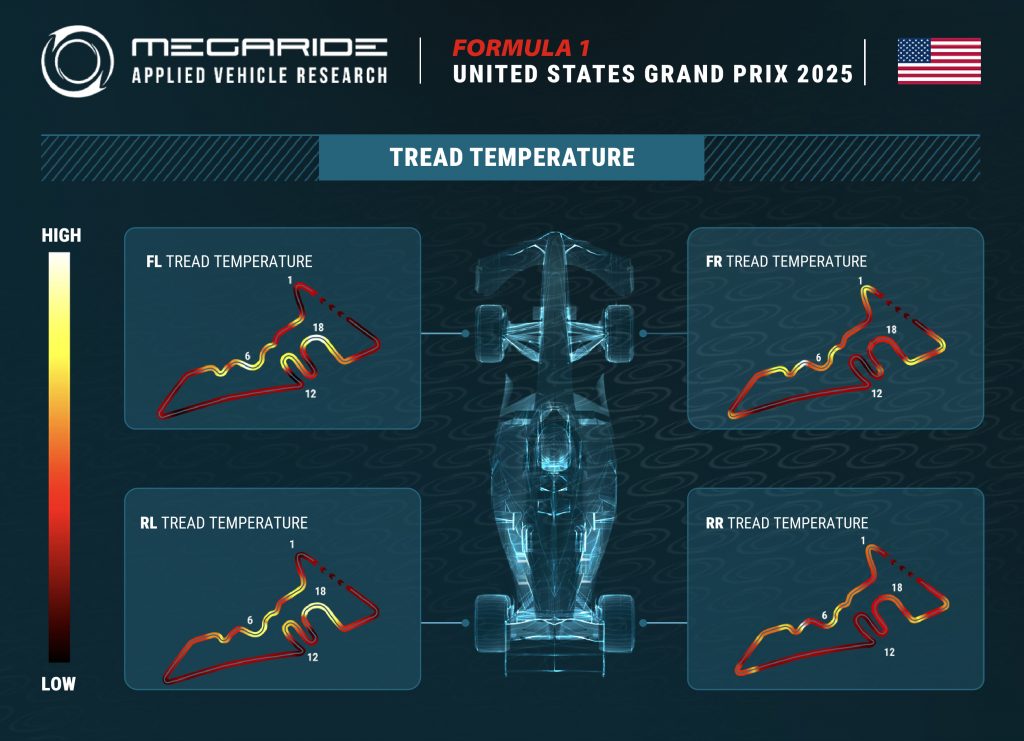
After the Singapore GP and McLaren’s clinching of the Constructors’ Championship, the F1 paddock heads to Austin, Texas this weekend for the United States Grand Prix, the first of four rounds in the Americas swing.
Designed by Hermann Tilke, the American layout strings together corners inspired by some of F1’s most iconic tracks: sequences reminiscent of Silverstone’s Maggots–Becketts, Istanbul’s Turn 8, and Hockenheim’s Arena section. It’s a highly technical circuit with notable elevation changes—the uphill blast to Turn 1 being the signature feature. With these characteristics, the ideal car configuration calls for a balanced compromise to unlock performance across every phase of the lap.

HIGH LATERAL LOADS | MEDIUM–HIGH ABRASIVE WEAR | COMPROMISE SETUP
– As the map highlights, tyres are heavily worked over most of the lap: Sector 1 punishes both left and right sides due to rapid, high-speed direction changes that generate significant lateral load and g-forces. Another key area is Turns 16–17–18, a fast triple right that applies sustained lateral load and taxes the left-hand tyres.
– For this weekend Pirelli has made a “step” in the nomination, supplying the hard C1 along with the medium C3 and soft C4. The aim is twofold: manage the high longitudinal and lateral loads while widening strategic options.
– Because the track sees relatively little running, expected grip is variable—starting medium-to-low on Friday and improving session by session with track evolution. Wear is forecast to be moderate-to-high, largely due to the abrasive asphalt.
The rears are stressed by heavy braking and traction zones, while the fronts pay the price for the fast direction changes. It’s a demanding, technical circuit with multiple overtaking opportunities that should produce an exciting race—yet qualifying and pit-wall strategy will still be decisive.
